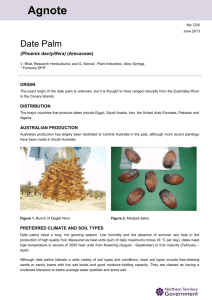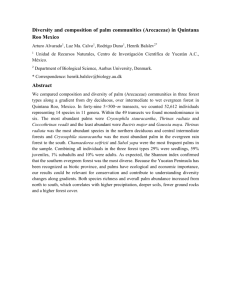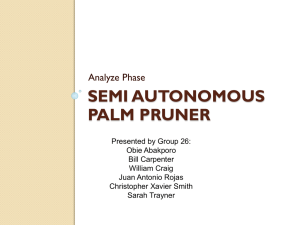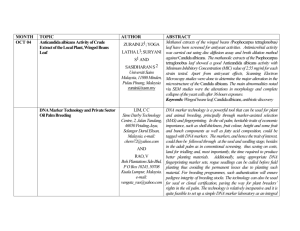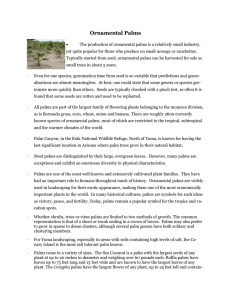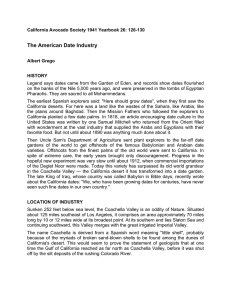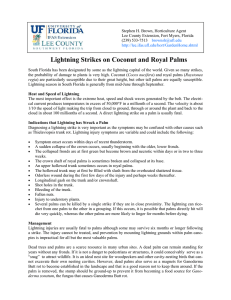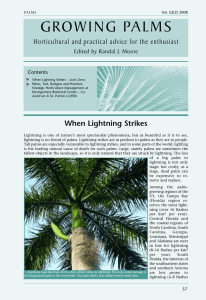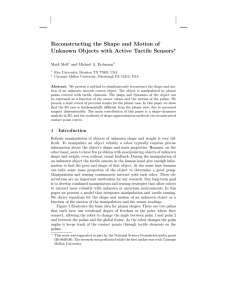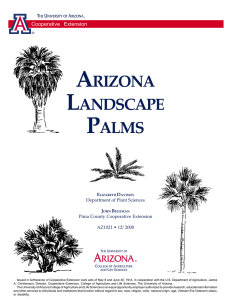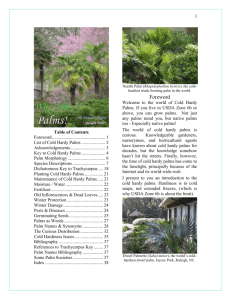This project will provide a modern synthesis for the structural biology
advertisement
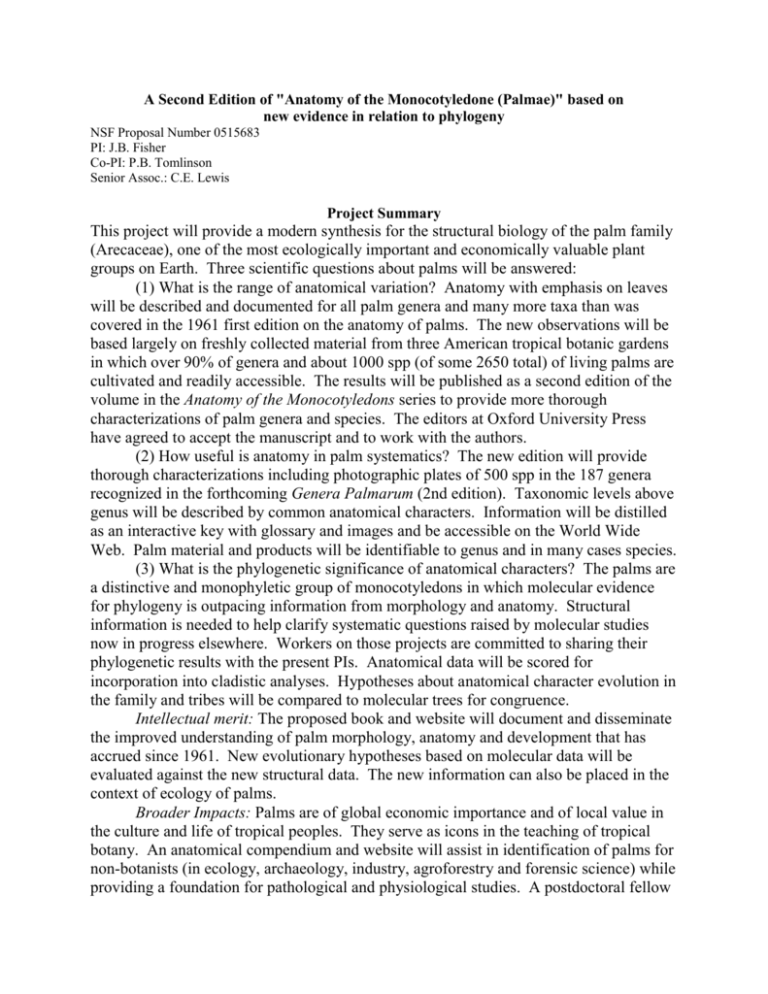
A Second Edition of "Anatomy of the Monocotyledone (Palmae)" based on new evidence in relation to phylogeny NSF Proposal Number 0515683 PI: J.B. Fisher Co-PI: P.B. Tomlinson Senior Assoc.: C.E. Lewis Project Summary This project will provide a modern synthesis for the structural biology of the palm family (Arecaceae), one of the most ecologically important and economically valuable plant groups on Earth. Three scientific questions about palms will be answered: (1) What is the range of anatomical variation? Anatomy with emphasis on leaves will be described and documented for all palm genera and many more taxa than was covered in the 1961 first edition on the anatomy of palms. The new observations will be based largely on freshly collected material from three American tropical botanic gardens in which over 90% of genera and about 1000 spp (of some 2650 total) of living palms are cultivated and readily accessible. The results will be published as a second edition of the volume in the Anatomy of the Monocotyledons series to provide more thorough characterizations of palm genera and species. The editors at Oxford University Press have agreed to accept the manuscript and to work with the authors. (2) How useful is anatomy in palm systematics? The new edition will provide thorough characterizations including photographic plates of 500 spp in the 187 genera recognized in the forthcoming Genera Palmarum (2nd edition). Taxonomic levels above genus will be described by common anatomical characters. Information will be distilled as an interactive key with glossary and images and be accessible on the World Wide Web. Palm material and products will be identifiable to genus and in many cases species. (3) What is the phylogenetic significance of anatomical characters? The palms are a distinctive and monophyletic group of monocotyledons in which molecular evidence for phylogeny is outpacing information from morphology and anatomy. Structural information is needed to help clarify systematic questions raised by molecular studies now in progress elsewhere. Workers on those projects are committed to sharing their phylogenetic results with the present PIs. Anatomical data will be scored for incorporation into cladistic analyses. Hypotheses about anatomical character evolution in the family and tribes will be compared to molecular trees for congruence. Intellectual merit: The proposed book and website will document and disseminate the improved understanding of palm morphology, anatomy and development that has accrued since 1961. New evolutionary hypotheses based on molecular data will be evaluated against the new structural data. The new information can also be placed in the context of ecology of palms. Broader Impacts: Palms are of global economic importance and of local value in the culture and life of tropical peoples. They serve as icons in the teaching of tropical botany. An anatomical compendium and website will assist in identification of palms for non-botanists (in ecology, archaeology, industry, agroforestry and forensic science) while providing a foundation for pathological and physiological studies. A postdoctoral fellow and graduate student will be trained; interpretive and educational materials will be distributed by the Fairchild Challenge Network to 30,000 U.S. school children, and globally, through botanic gardens with palm collections, partners in the IUCN Palm Specialist Group, the Global Trees Campaign, and the Global Palm Conservation Assessment. At FTBG, research results will be added to interpretive signs and tours presented to school children, teachers and the general public who visit the Garden.



